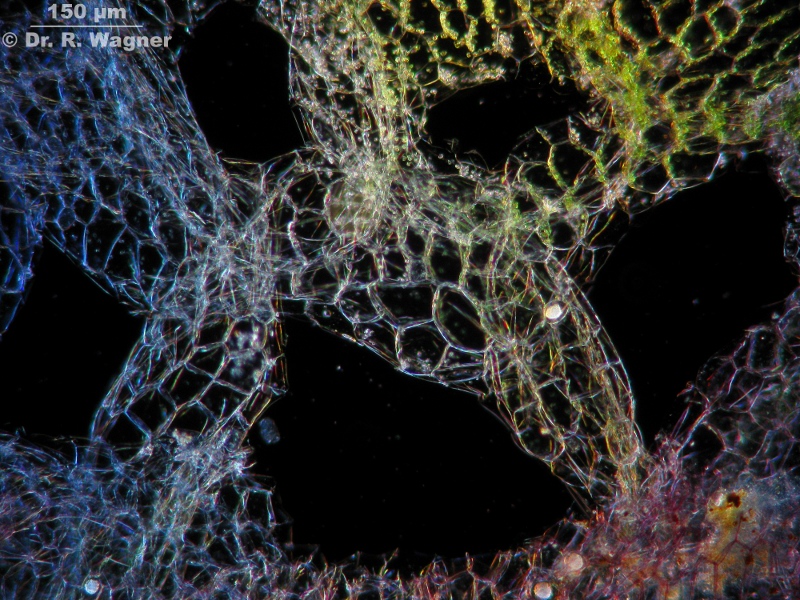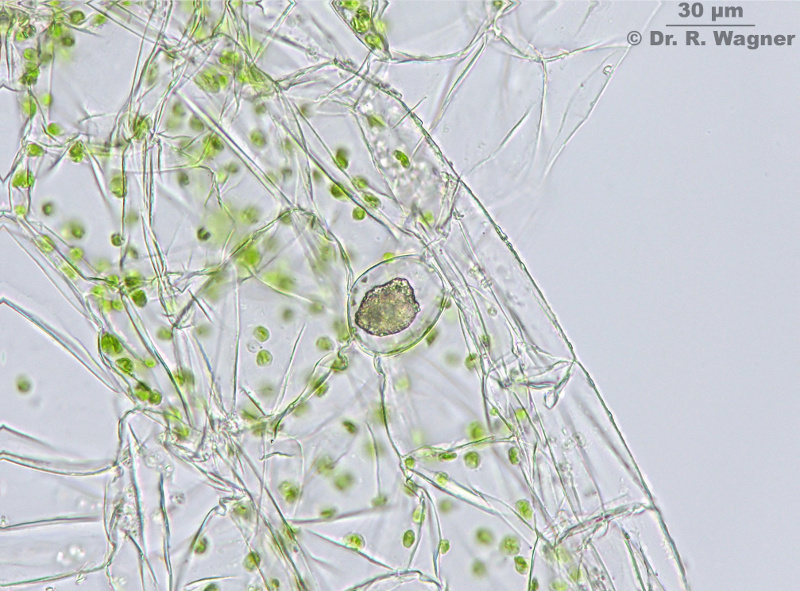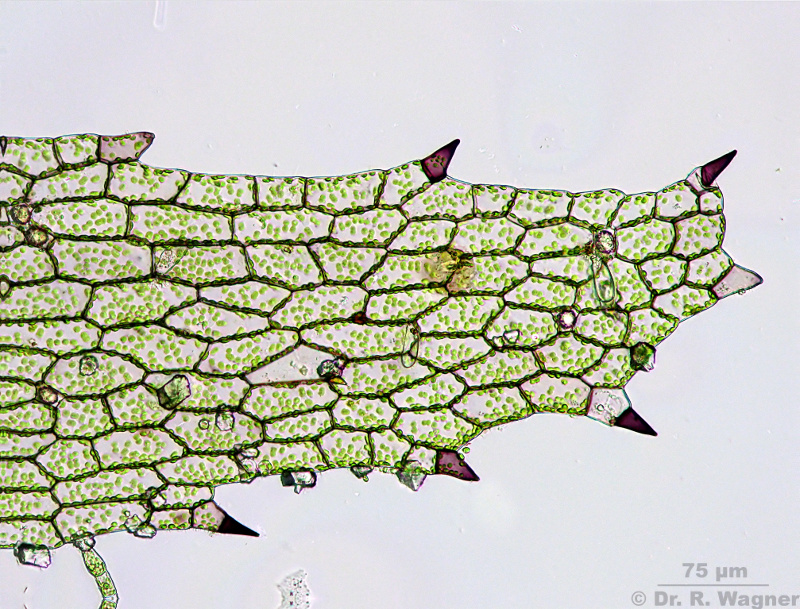BJ wrote:Ralf,
The oil body looks unusual as it has an irregular rather "lumpy" outline. In most cells/organisms oil bodies have a rounded outline. In this case could the oil actually be solid fat ?
BrianO
Brian,
oil bodies are unique with liverworts and must not be confused with oil-droplets that are common to many protists. An oil body of a liverwort posseses an outer membrane that encapsules the oil in it. This is the reason why you described it as "lumpy". The shapes of these oil bodies are different with different species.
Oil droplets in a diatom for example have no membrane, they are just like a drop of oil in water and therefore of circular shape.
Oil bodies of a liverwort can be observed only with fresh material. When the moss dries, the oil bodies disappear.
It is very easy to oversee this moss because it often grows together with all kinds duckweeds. But now you are knowing what to look for and I'm sure you will find this one, soon.





